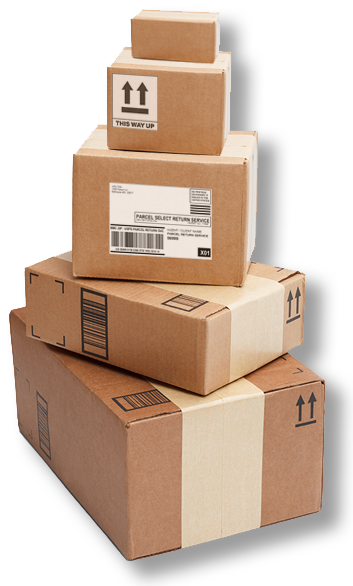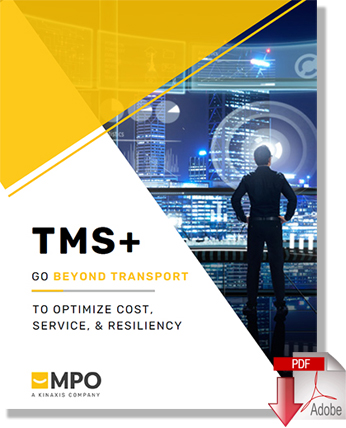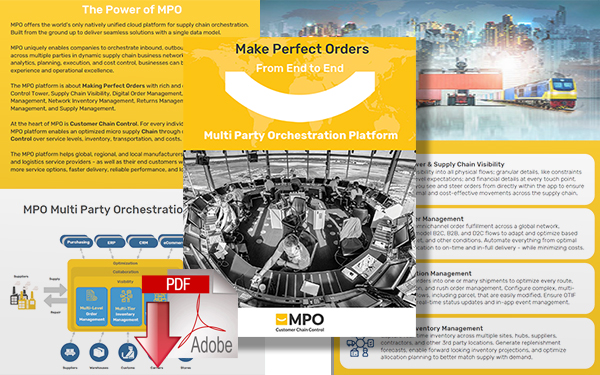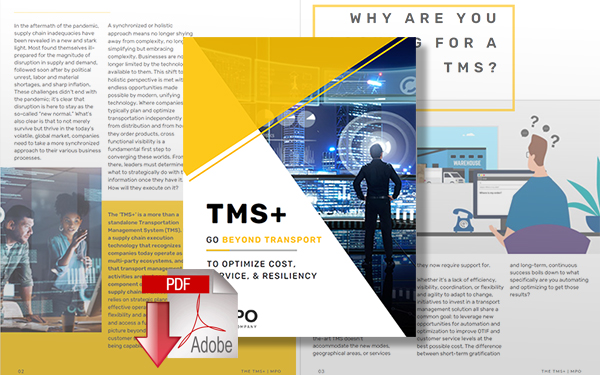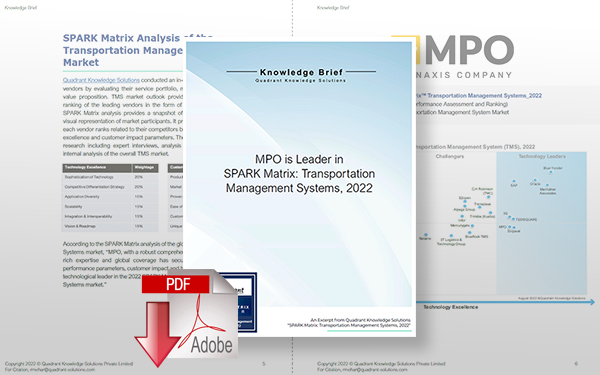5 Key Steps for Optimizing your Last Mile Delivery

From fast and smart rate shopping to calculating time in transit, here are 5 key capabilities that will help your team maximize performance and minimize costs across all modes for last-mile delivery optimization.
5 Key Steps to Optimize Across Modes for Last Mile Delivery
In the wake of the e-commerce boom, shippers and logistics service providers are experiencing unprecedented levels of customer demand.
In theory, that’s a real boon. But for companies still operating around manual processes, it’s an uphill battle to manage newfound complexities around inconsistent rates, tight capacity, and short delivery time windows.
Parcel management has its own intricacies, such as factoring zones and dimensional weight into the price tag.
Parcel Management Q&A with Christine Taylor Sr. Director, BD for US, Canada & LATAM MPO, a Kinaxis Company
Q. Why is parcel gaining attention now?
A. Shippers and LSPs want to streamline connectivity and communications with their parcel providers. Accurate rating is one of their greatest challenges. Throughout my conversations with logistics executives, they regularly cite carrier invoices returning with a higher fee than what was quoted. The inability to recoup these costs amid already thinning margins is detrimental to the bottom line.
The driver shortage is also driving interest in parcel. With numbers exceeding 80,000 from 61,000 in three years, securing carriers or bulk orders is proving to be more difficult. Organizations are deconsolidating larger orders to pull enough products and meet their customers’ demands and delivery requirements to avoid losing the whole order - or worse, losing the client due to limited capacity.
Because this workaround is expensive, it’s crucial for teams to save on efficiencies and logistics costs where they can, such as through seamless rate shopping and rate management.
Q. Has it gotten easier to work with parcel providers and why?
A. Parcel providers - both tier 1 players like FedEx, UPS, and DHL, as well as the surging regional and super regional providers - have become much easier to work with. Most parcel providers are willing to work within API connectivity in lieu of third-party providers who are still working with EDI or XML. As a result, TMS software providers with robust, underlying data models can offer extended functionality such as rate shopping, real-time tracking, and reporting and analytics.
Q. How is effective parcel management a critical advantage?
A. Today, communication between parcel providers and clients can be much more thorough, not only from a visibility perspective but also enabling greater cost control. Using a multi-modal TMS that incorporates parcel, organizations can now assess the true cost of a shipment, including services requested and accessorial requirements, and get real-time tracking and accurate rating.
When managers have to enter their parameters and rate shop for each and every carrier across dozens of websites, then handle processes like pickup, track and trace, and invoicing via carrier portals or even by phone or email, these inefficiencies rack up a lot of time and money - especially when invoices don’t match the initial quote.
That’s why parcel via TMS is becoming a real game-changer. Teams can rate shop, execute, track and trace, audit, and pay all within one platform regardless of the mode, leg, or partner they’re dealing with. The transportation management system will also flag unexpected charges (detention charges, inside delivery, beyond charges, sort and segregate, etc.) and create detailed line items that make it easy for finance to audit, saving valuable time and money.
Parcel Is a Crucial Value-Add in the Evolution of the Transportation Management System
The growing requirements and demands placed on shippers and logistics service providers have pushed transportation management systems to become more agile and able to support greater service levels and cover multiple modes - especially parcel.
[email protected] | 813-777-5060
B2C Omnichannel E-commerce Growth
As B2C omnichannel e-commerce continues to grow, being able to optimize across modes for last-mile delivery will help brands and shippers gain a competitive advantage.
From fast and smart rate shopping to calculating time in transit, here are the key capabilities that will help your team maximize performance and minimize costs.
YOUR GUIDE to OPTIMIZING your LAST MILE DELIVERY
1. Automate Rate Shopping
Logistics professionals typically review pending shipments from their Enterprise Resource Planning (ERP) or Warehouse Management System (WMS) to narrow down available carrier options and rates against delivery dates and other selection criteria.
The process is tedious and time-consuming, often involving multiple carrier sites and lengthy parcel rate guides that break down every detail of cost criteria across multiple pages.
Automated rate shopping that factors time in transit and saves logistics teams on time and cost by centralizing data (see the sidebar below “Five Benefits of Integrated Parcel Management”). Users can either actively rate shop across all carrier options in one platform, or they can let the system do it for them.
The automated process uses smart business rules that factor in the service levels, parcel carriers being used, and delivery deadlines to instantly select the best, most cost-effective option for each individual order.
2. Factor Constraints and Exceptions
Optimizing shipments may require greater considerations around whether to go LTL or parcel, as well as how to accommodate unexpected changes. For instance, if a new shipment comes in that pushes the total over the weight break for the parcel, it will have to be an LTL or palette delivery. From a labor perspective, that can mean hours of setback as teams stop what they’re doing to redo work, and manually consolidate and re-ship orders. Smart automation can optimize parcel against LTL in milliseconds.
In the case of exceptions, such as a missed pick-up or carrier delay, logistics teams must check the agreed-upon SLAs, determine whether the setback puts them at risk of a late delivery, and decide whether they’ll need a next-day service for OTIF delivery. Smart automation takes all these factors into account against all available resources to ensure teams make fast, confident decisions.
3. Streamline High Volume and International Orders through Order Consolidation
Being able to make quick decisions without manual intervention unless necessary is especially critical for brands that ship at high volumes, as well as across zones or internationally. Retailers, distributors, manufacturers, and logistics service providers operating at incredibly high volumes, at millions of shipments a day, can no longer afford to manage the load manually.
Smart order consolidation allows you to optimize against LTL and parcel. If you have multiple parcels, supply chain software will automatically search for the best fulfillment opportunity, choosing an LTL carrier over a parcel when it’s less expensive but will still deliver orders on time. If multiple parcels are headed to the same address and meet the weight threshold, teams can save on the cost by shipping and tracking all the parcels via an LTL carrier. When dealing with large quantities, the cost savings become exponential.
Five Benefits of Integrated Parcel Management
1.) Streamline Connectivity
NO SEPARATE MODULE | Webservice API integration with carriers is fast, seamless, and cost-effective. Rate shop, execute, track and trace, audit, and pay all within one platform to optimize and automate parcel management.
2.) Minimize the Risk of Delays & Overcharges
AGILITY & CONTROL | Rate parcels with accurate shipping units, weights, and volume, as well as relevant service levels. Minimize surprises, delays, and overcharges.
3.) Serve Customers Better
ENHANCED COMMUNICATION | Offer accurate and instantaneous rate quotes to customers with multiple delivery options, integrated label printing, real-time tracking, and invoicing. Make easy in-app changes to the carrier or service level as needed.
4.) Save on Logistical Costs
ROBUST, UNDERLYING DATA MODELS | Enable parcel tracking, reporting, and analytics for full visibility of parcel flows. Assess the true cost of a shipment, including services requested and accessorials.
5.) Drive Efficiency
SAVE TIME AND MONEY | Unexpected charges (detention charges, inside delivery, beyond charges, sort and segregate, etc.) are flagged and recorded as detailed line items for Finance to audit. Enable seamless rate shopping and rate management, and reporting and analytics.
SEARCH SC24/7 for more CONTENT on: “Parcel Management”
4. Enable Fast Decision-Making
Efficiency comes down to how quickly complex decisions can be made. What are the carrier service levels? Should an order be next-day air delivery - or can it go ground? What type of materials are being transported – are they hazardous? Logistics teams often defer to a preferred carrier. But, if they were to look at the bigger picture across all options, they might find that carrier is not ideal because they aren't always the cheapest or offer the best service level.
Read: 5 Major Misconceptions About Perfect Supply Chain Order Fulfillment
By automating the carrier selection and route optimization process, all the different variables across constraints, requirements, and service level agreements across all zones can be factored into near-instant decisions that are often more advantageous.
For example, it’s common for logistics teams to routinely select the fastest options like next-day air to ensure orders get to customers on time. But this is always going to be the most expensive option, and unnecessary if there’s no rush. Automating the selection process using smart business rules will enable teams to instantly select the best options for any given scenario, which might be next-day air for expedited orders or a ground carrier that can deliver packages on time and at a much better rate for orders with longer lead times.
5. Leverage Analytics for Continuous Improvement
Fast decisions also need to be good ones. Even the best parcel management technology is only as good as the options it has to choose from. Access to detailed logs gives logistics managers and directors the ability to audit why certain carrier selection decisions were made.
Also, managers can use analytics to track growing demand. If they see new shipment activity from zones or regions their current carriers don’t support well, they can start exploring new carrier options in advance and onboarding them quickly to optimally support that growth.
Do It All On One Platform - The MPO Transportation Management System
The MPO Transportation Management System or TMS+ enables automated and optimized supply chain execution across all modes, including parcel and returns management, for continuity across the entire order lifecycle. Through API connections, the TMS+ automates the rate shopping work for you, providing valuable rate, service, and transit time information from diverse LTL, Truckload, and Parcel carriers directly in the system.
Enable fast decision-making around the complex, high volume, international moves, consolidate orders, and leverage real-time analytics to measure partner and execution performance for continuous improvement. The TMS+ also offers the lowest total cost of ownership with one platform implementation that contains all modes.
MPO is a Multi-Party Orchestration platform offering TMS+. Recently recognized as a 2022 Transportation Management System Leader, the TMS+ offers the broadest connectivity and intelligence across partners, regions, and modes. Learn about how you can start leveraging data to automate and optimize across the full order lifecycle by downloading the TMS+ whitepaper.
You can also get to know the MPO Transportation Management System (TMS+) by browsing the solution page, getting in touch by reaching out to [email protected], [email protected], or requesting a demo today.
About the Author
Rebecca Parrish is a Business Consultant at MPO with 20 years of experience working alongside executives to understand their technological landscape and determine meaningful ways to improve their processes and architecture to better align with their goals.
She is an experienced Pre Sales Consultant with a demonstrated history of working in the logistics and supply chain industry. Strong information technology professional skilled in Analytical Skills, Databases, and Team Building.
Related Resources
Multi-Party Orchestration Platform
In this brochure, you'll find a guide to MPO's unified cloud platform for multi-party orchestration, including its rich and flexible solutions: Control Tower, Supply Chain Visibility, Digital Order Management, Transportation Management, Network Inventory Management, Returns Management, Spare Parts Management, and Supply Management. Download Now!
TMS+ Go Beyond Transport to Optimize Cost, Service, & Resiliency
In this paper, we discuss why a holistic, “TMS+” approach is integral to success in the new normal and beyond,e outline how the TMS+ breaks down silos to optimize across inventory, transport, logistics, and order management concurrently, intelligently, and in a timely and relevant manner for cost, service, risk, and sustainability. Download Now!
SPARK Matrix Transportation Management System Software Analyst Report
Quadrant Knowledge Solutions’ SPARK Matrix: Transportation Management Systems, 2022 research includes a detailed analysis of the global market regarding short-term and long-term growth opportunities, emerging technology trends, market trends, and future market outlook. Download Now!
More Resources from MPO
Related Article: Top Trends Driving Change and Technology Strategy Within Logistics & Transportation Management


